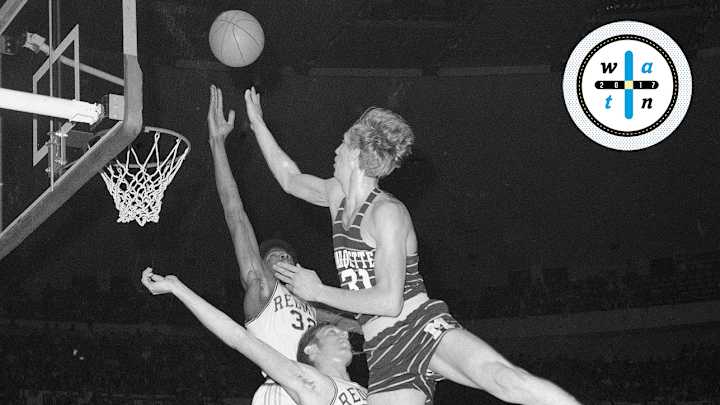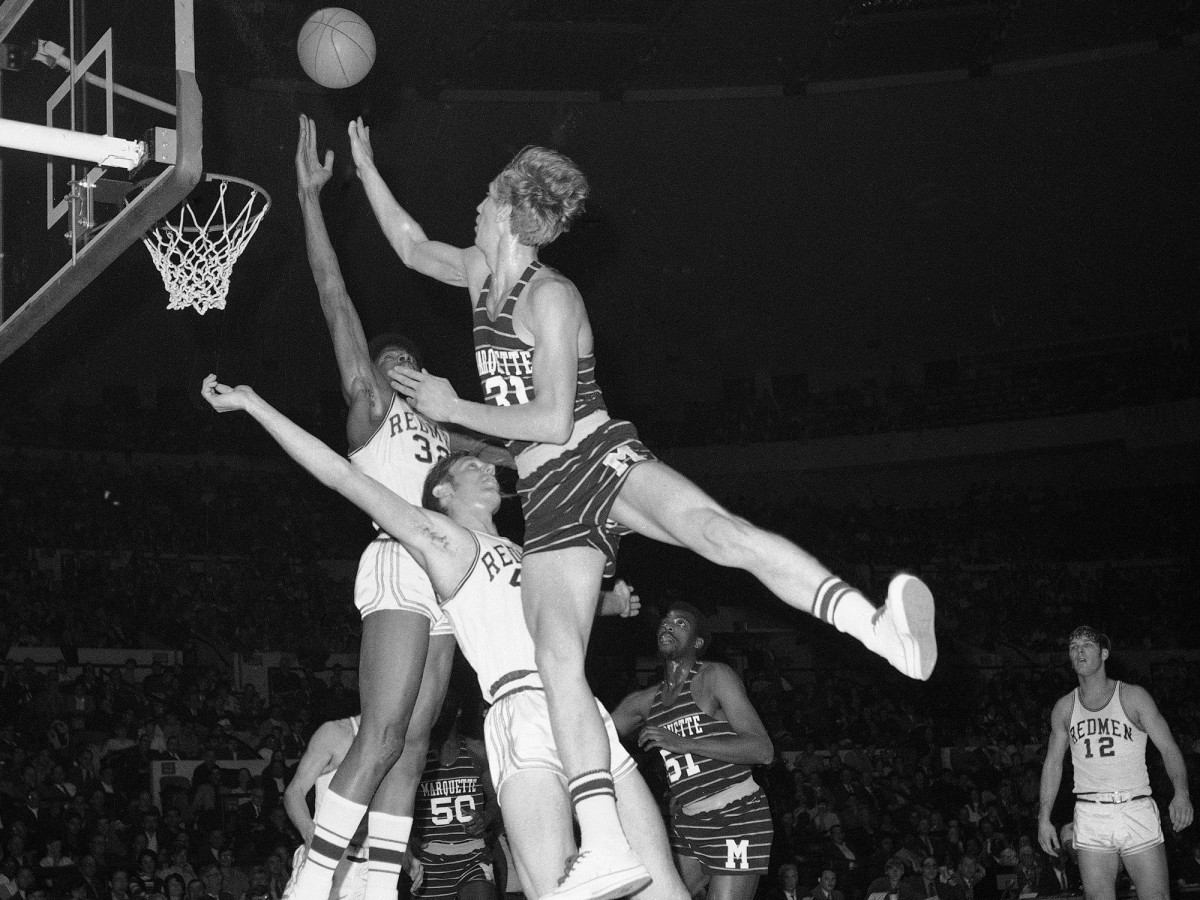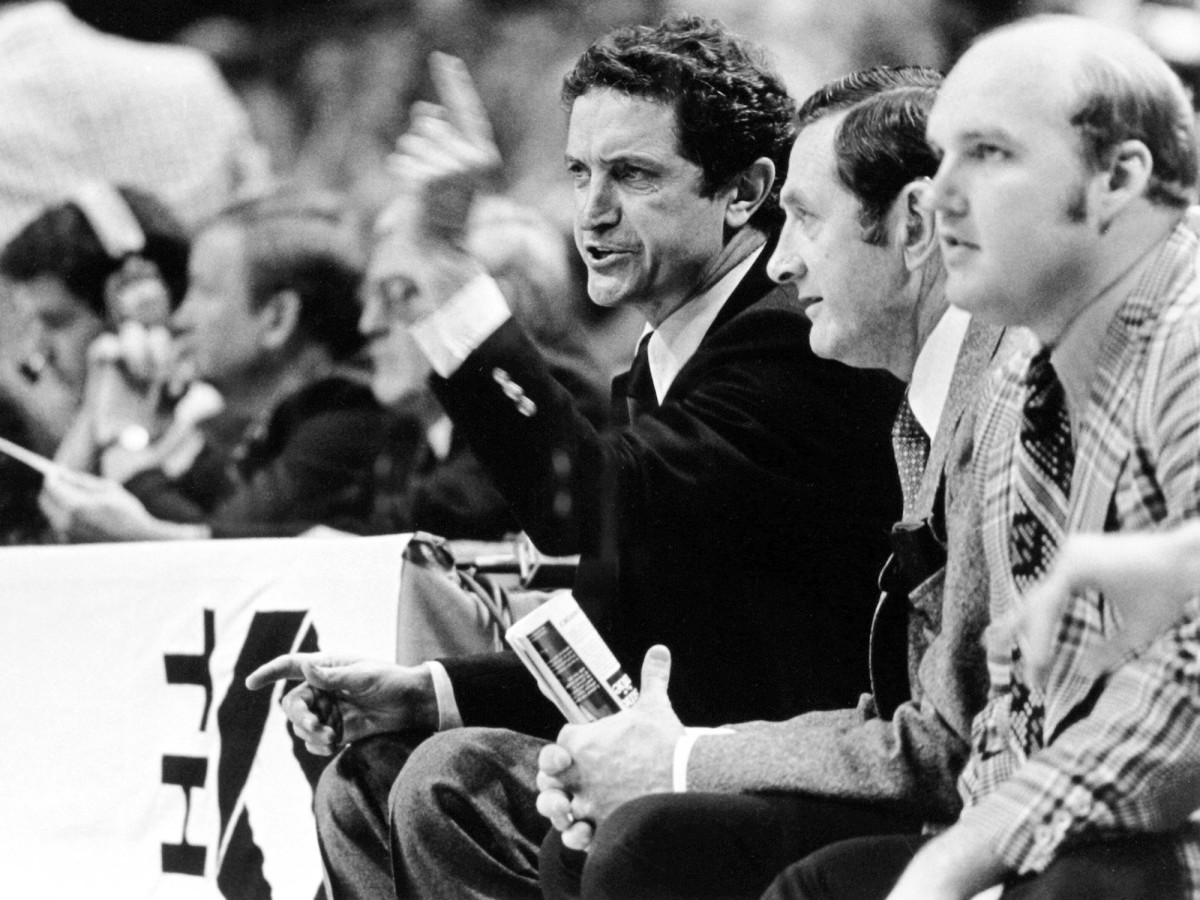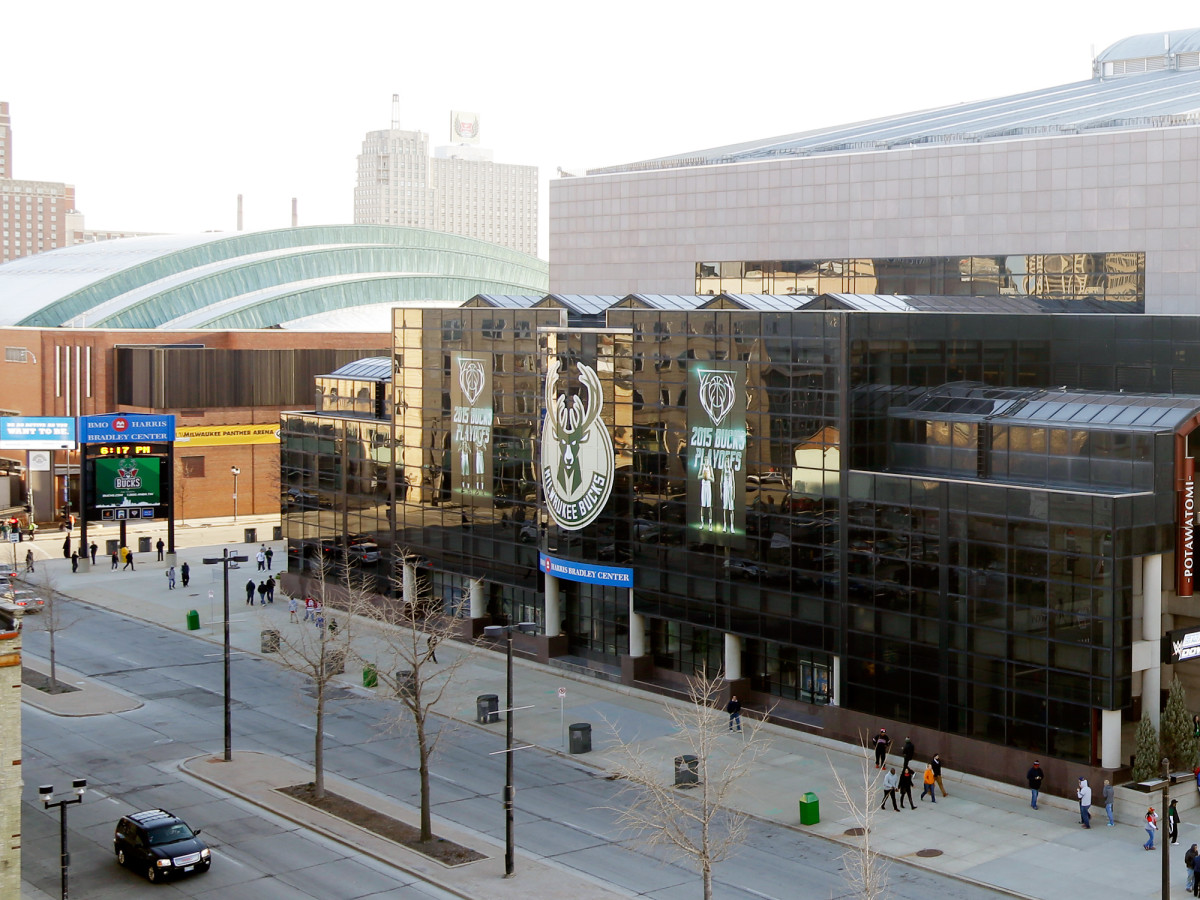As progress rounds off Marquette's edges, celebrating a unique program's unlikely success

We should begin with the tale of the Bumblebees. This has nothing to do with entomology, chunk light tuna, or Nikolai Rimsky-Korsakov, in case you were wondering, but you probably weren’t. The Bumblebees were a set of basketball uniforms—dark blue edging toward black, with horizontal yellow stripes and the number in white—and there is not a single Marquette alumnus/a who wouldn’t sell a kidney to get their hands on an authentic one.
They were worn just long enough for the Warriors—and we’ll get to the nickname business in a minute—to win the 1970 NIT and then to run off a perfect regular season in 1970–71, only to be upset in the NCAA tournament by Ohio State in the game that the late Al McGuire once referred to as “the only time I ever got screwed without getting kissed.” Then, the NCAA stepped in with its seven-league boots of stupid. But, first, let Joe Thomas, Marquette ’71, tell how the Bumblebees came to be.
“Al was an executive with Sand Knit,” Thomas said. “So, one day, he shows up with these uniforms, and we said, ‘We are not wearing these uniforms,’ and Al told us that this wasn’t a democracy.”
A brief aside: Marquette basketball in those days was indeed a dictatorship. Often, it was a smoothly running one, like Rome under the Caesars. However, more than occasionally, it was more like Freedonia as presided over by Rufus T. Firefly. This was one of the latter episodes, as Thomas explained.
“The uniforms had these ugly yellow socks,” he said. “So we told Al, ‘O.K., we’ll wear the uniforms if we don’t have to wear the socks.’”
It was an effective compromise until the guys in the blazers stepped in. They claimed the design of the uniforms confused the officials. “They told us that when we jumped, the guys on the other team got hypnotized or something,” said Jim Chones, the center on that undefeated team that lost to Ohio State.
“The refs said we looked like kaleidoscopes,” Thomas said. “They couldn’t read the numbers.”
The NCAA banned the uniforms, and they disappeared into boxes wherever it is that 100 years of eccentric, excellent basketball was stored on the snowblind campus along Wisconsin Avenue.

I have been back twice this year, once for the 100th anniversary of the student publications, and then last Saturday for a gala celebrating 100 years of Marquette basketball. I’d be lying if I didn’t say I felt a certain karmic symmetry to the dual centenaries. A century of basketball, and a century of people to document the wildness of it all.
The gala was held in the BMO Harris Bradley Center, an arena not quite 30 years old that has housed the Milwaukee Bucks and Marquette and a perfectly good building soon to be sacrificed on behalf of greed masquerading as progress. It was built to house an NHL team that never arrived.
To the immediate south is the old Milwaukee Arena, which always reminded me of a rolltop desk. The Wisconsin-Milwaukee Panthers play there now.
To the immediate north rises the iron work of what will be a new $524 million pleasure dome to replace the Bradley Center, which really doesn’t need to be replaced, unless you require a building in which you can charge 300 large for a luxury suite, which the new one will. Once the new building is finished, the Bradley Center must be demolished within a time frame specified in the deal. I have no sentimental feelings about that place at all. So there will be this spanking new monument to corporate over-compensation, and there will be the old, rounded arena, where most of the magic took place back in my day, back in the era that made all the other eras that folks gathered to celebrate. The Arena abides. Old cheers echo there. And, next door, in the doomed Bradley Center on Saturday, the ghosts came out to play.
*****
The first person I saw at the reception was Greg (Pope) Johnson, who lived next door to me on the 11th floor of McCormick Hall, the beercan-shaped men’s dorm in which I lived for two years. (McCormick went coed years ago, and it’s coming down soon, too.) His roommate was the late Maurice Lucas, who went on to glory with the Portland Trailblazers at the end of the 1970s. They were good neighbors, generally; the music through the cheesecloth walls was always jazz and very solid. (Living next door to Luke and the Pope gave me a real jones for Weather Report and the Jazz Messengers.) Pope came to the business-casual gala in a lovely Hawaiian shirt of which I was very jealous.
There are so many of them gone now: Luke, lost to cancer at 58; Dean (The Dream) Meminger, still the most iconic and charismatic player in the program’s history, dead of a cocaine overdose in 2013; and the entire coaching staff of the 1977 national championship team, Al, Hank Raymonds and Rick Majerus.
Bo Ellis and Butch Lee were there to represent that particular bunch of Warriors who gifted McGuire with a national championship in his last game as a coach. They appeared on a panel representing the 1960s and 1970s, and master-of-ceremonies Jay Bilas made the mistake of introducing Bo as the only Marquette player to play in two Final Fours.
“I am,” Bo corrected him, “the only Marquette player to play in two national championship games.” And, it was only after the laughter died out that you noticed that Bo was not wearing socks. It was business-casual, after all.
So many of them came back, young and old. Bo and Butch Lee and Earl Tatum. Travis Diener, Steve Novak and Rob Jackson from the surprise 2003 Final Four team. (Dwyane Wade was in France, but he sent along a video tribute.) The event was the brainchild of Steve Wojciechowski, who was dragooned into the role of piñata by practically everyone on the dais and who is currently entering into his fourth season as the coach of the Golden Eagles (Yeah, we’ll get to that, I promise).

The coaches that did attend—Tom Crean, Mike Deane, and Kevin O’Neill—all talked about coping with the history of the program, and McGuire’s giant shadow. It was too much for some people; the late Bob Dukiet came and was so overwhelmed by it that he tried to sever the program from its history to the point where former players staged a kind of palace coup. O’Neill brought the program back, and Deane followed him as Marquette lodged itself temporarily in several pre-fab conferences—The Great Midwest? Conference USA?—before landing in the Big East.
It was Crean, however, who most firmly and permanently reattached the present and the future to the past. It was while Crean was coaching that McGuire died of leukemia in 2001 and, all through McGuire’s final illness, the two men stayed in touch.
“He always told me not to worry about what he had done,” said Crean, who admitted that he’d “been booed in this building” in the years after the Final Four run. “He told me to do things the way I wanted to do them.” Which is how, I guess, the Warriors became the Golden Eagles, although there was some serious blowback on the whole nickname thing throughout the festivities.
“We were proud to be Warriors,” said Tom Flynn, one of McGuire’s earliest recruits. “Many of us wondered what happened when they stopped being Warriors.”
Nonconference scheduling is changing, but what does that really mean?
The transition was legendarily clumsy. The Warriors were traditionally represented by a Gilbert-and-Sullivan Indian named, grotesquely, Willie Wampum. This became increasingly embarrassing and controversial as the years went by. So the school started trolling for a new team monicker. They settled on Golden Eagles, which did not sit well with former Warriors, who wondered why they couldn’t be represented by, say, a Viking, or an Ostrogoth, or a member of the Fianna from the Kingdom of Ulster.
So the school tried again, and for one brief (and completely idiotic) moment in 2005, the team was known as the Marquette Gold. Wes Matthews, now with the Dallas Mavericks, remembers how that went over. “They said, ‘Marquette Gold,’ and I thought, man, I don’t know if I can do that,” Matthews said. The new nickname lasted a week before it was ridiculed into blessed oblivion.
(I campaigned hard for a return to what they used to call the football team back in the 1920s and 1930s, The Golden Avalanche. Some young weisenheimer from the Marquette Tribune suggested The Shameless Capitulators. I never was more proud of my degree than when that happened.)

There was more to Saturday night than the celebration of a successful basketball program. It was a celebration of identity, forged in the most unlikely of places by some of the most unlikely people ever to walk the campus of a Jesuit institution. The team won a lot of games, but it also had a coach who once responded to someone who insulted his center by saying the player “couldn’t throw the ball in Lake Michigan” by bringing the player down to the beach and having him do that very thing. It won an NCAA championship, but it also once had a player take down the nets at Madison Square Garden with a switchblade. Nothing like that can happen in college basketball any more. The corporate partners would stroke out.
Progress is as progress does. The edges of the program are rounded off now; the whole operation is a little smoother and professional, in every conventional sense. The Bumblebees are still packed away, and they’re still against the rules, as far as anyone knows. Very soon, the games will be played in a brand-new and ridiculously expensive arena as progress marches north along Fourth Street in downtown Milwaukee. But the old arena will remain because the ghosts always need a homecourt on which they can play forever.
